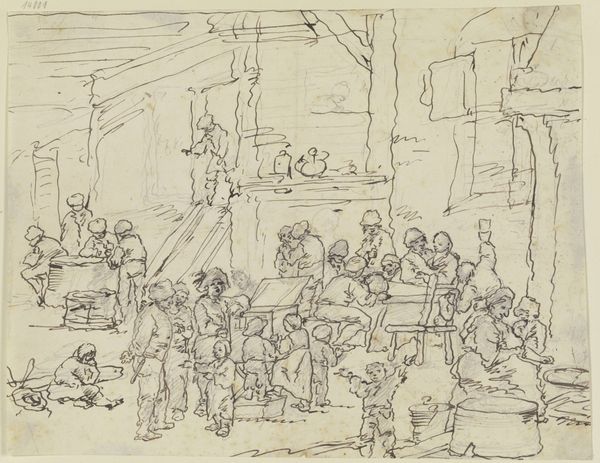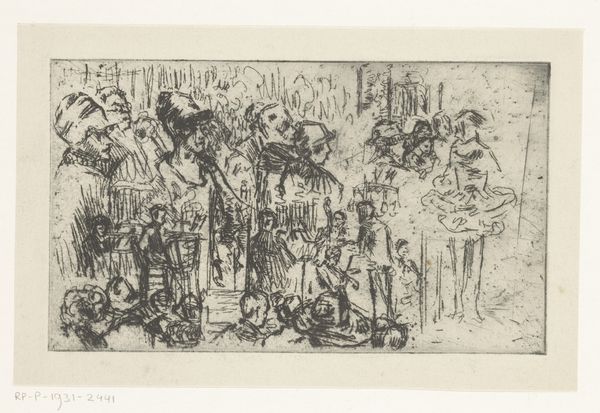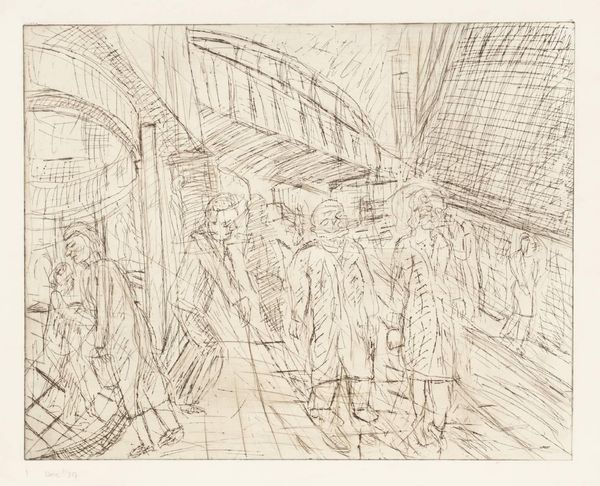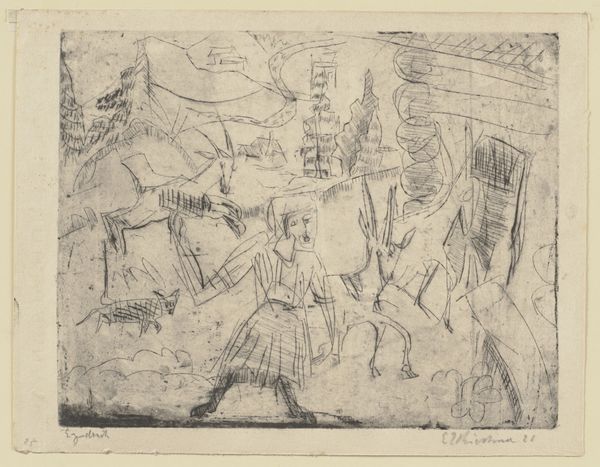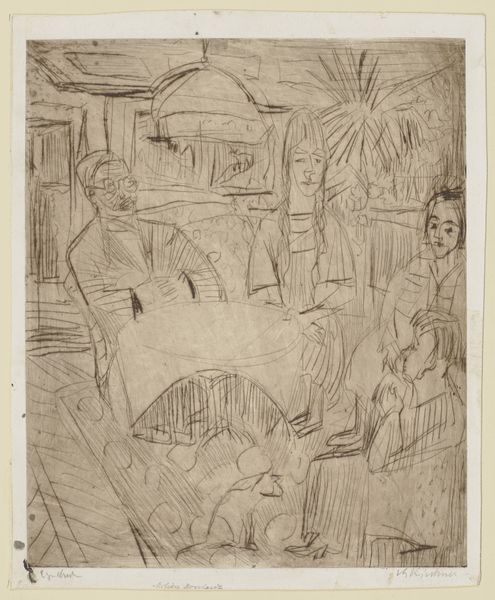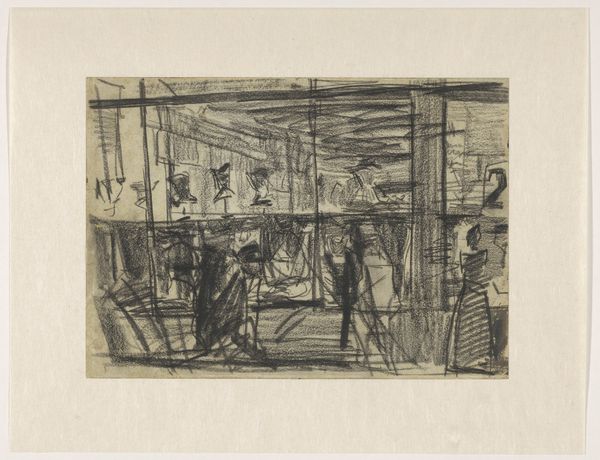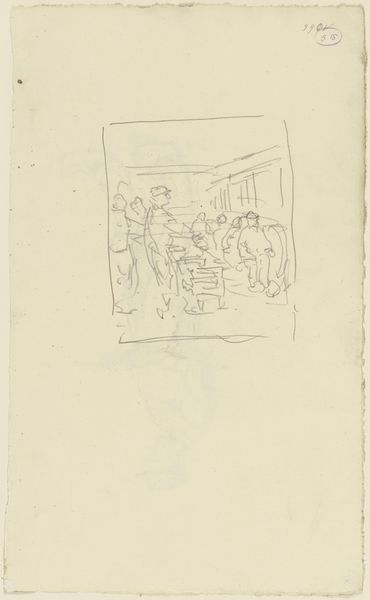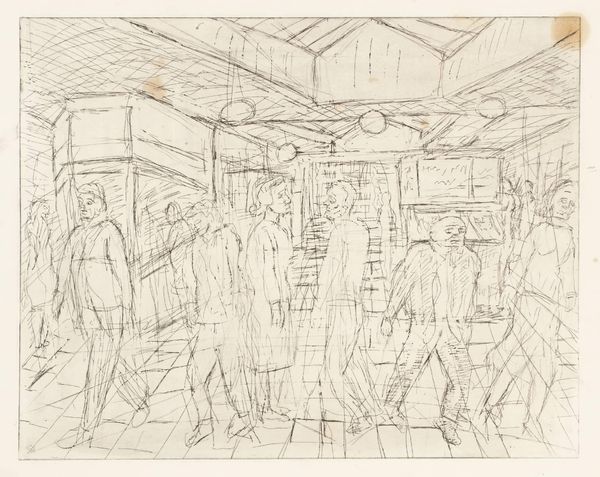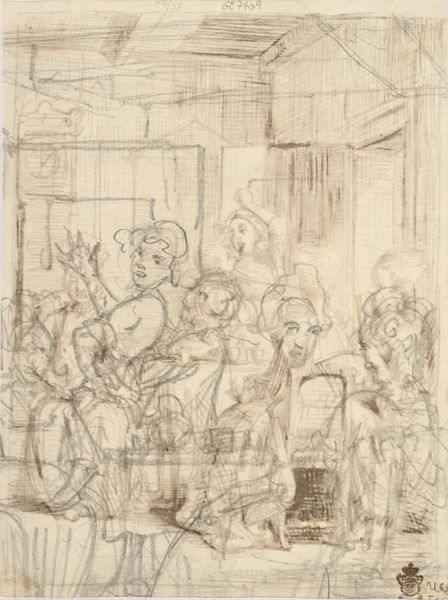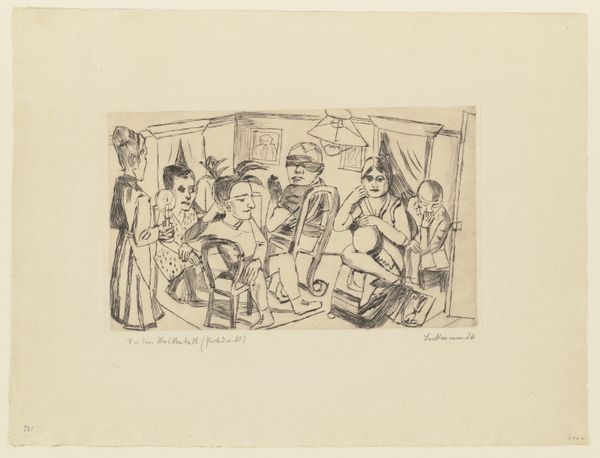
drawing, print, etching
#
drawing
# print
#
etching
#
figuration
#
group-portraits
#
expressionism
Copyright: Public Domain
Curator: This etching is titled "Gesellschaft im Estrich," which translates to "Society in the Attic," possibly created around 1923 by Ernst Ludwig Kirchner. It now resides here at the Städel Museum. Editor: It looks like a fever dream sketched on a napkin—urgent, unfinished, a peek into a world half-seen, half-remembered. There's a haunting quality to the figures, they almost seem trapped. Curator: That feeling of being trapped really resonates, doesn't it? Kirchner, as a leading figure in Expressionism, used his art to reflect the turbulent society around him. Consider how the post-World War I era shaped his subjects, creating a piece filled with nervous energy. Editor: You can definitely sense the social unease. It’s not just a portrait of people, it's like a gathering of anxieties. I imagine this attic scene being more of a symbolic shelter, a refuge from the chaotic streets below. Curator: Precisely. Notice the intentional use of line, too—so frantic and raw. This etching captures his mental state but also a sense of societal decay that was taking root across Germany in the 20's. This piece has all of the group portraits traits in terms of style Editor: And yet, amid this darkness, I am drawn to it. I’m trying to pinpoint it. Maybe it's because I find this type of raw expression so appealing—seeing human emotion laid bare in the frantic lines, imperfections and all. Curator: That resonates for me. What is fascinating about this piece is how Kirchner managed to combine social critique with profound personal turmoil and emotional depth that is easily communicated with each observation Editor: It's a window, isn't it? Both into a specific moment in history and into Kirchner's own turbulent soul. Seeing all of the raw expression he uses in conjunction with the historical time really makes this etching something special to observe.
Comments
No comments
Be the first to comment and join the conversation on the ultimate creative platform.
